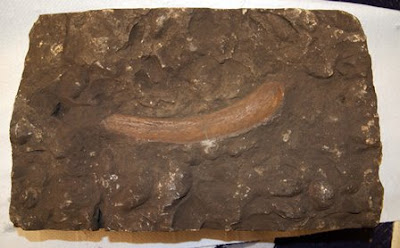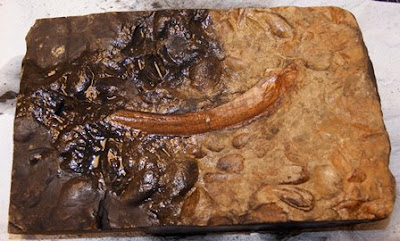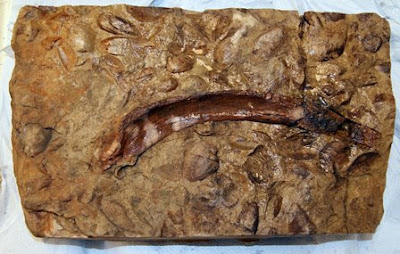 |
| Before Conservation |
The Cleaning Process
We use a dental steam cleaner with deionised water. This is water that has had the impurities filtered out, a bit like the filter jugs that you can get for your own kitchens, but a bit more refined. We can adjust the pressure coming out of the nozzle so can do very fine cleaning. Steam cleaning is one of my favourite jobs, as it can be really satisfying. This one turned out to be very satisfying indeed!
Half Way Through
 |
| During Conservation |
In the photograph above you can see a half cleaned and un-cleaned section. As you can see the dirt layer lifts of very easily without damaging the underlying surface. The oval shapes beginning to be seen just under the rib are fossilised sea shells. It took a couple of hours to clean this up, including the back. Sometimes if fragile paper labels are present we have to protect them otherwise they would be obliterated.
The Final Stage
 |
| After Conservation |
As you can see from the last picture the finished article looks radically different from the first time it came into Conservation. The removal of the surface deposits, which are most likely industrial and quite acidic in nature, will ensure the continued longevity and enjoyment of this object. We can also see that part of the end of the rib has been damaged but is still partially preserved in the matrix of the stone. Additionally, the sea shells will help our Geologist to date the rib more precisely and hopefully help to identify the dinosaur.
Cleaning can yield up more information, protect an item by removing harmful industrial deposits and enable you to see more of this dinosaur.
Find out more about the forthcoming 'There's a Dinosaur in the Museum' display on our What's On website (opens as new link).





No comments:
Post a Comment